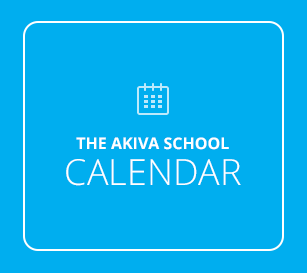 I wanted to take this opportunity to wish everyone a wonderful and meaningful Pesach. The Seders are a special event in the Jewish calendar where we can put our personal touch on the flow and celebration of the evening as we retell the story of the exodus from Egypt. Here are some suggestions which I hope will encourage you to add some creativity and get each person at your Seder involved.
I wanted to take this opportunity to wish everyone a wonderful and meaningful Pesach. The Seders are a special event in the Jewish calendar where we can put our personal touch on the flow and celebration of the evening as we retell the story of the exodus from Egypt. Here are some suggestions which I hope will encourage you to add some creativity and get each person at your Seder involved.
Chag Pesach Sameach!
Innovative Seder Ideas (adapted and modified from blog article by Bruce -threejews.net)
1. Prepare in Advance. I realized that one important part of having an interesting Seder is to have it be more participatory, and this requires that people come to the Seder with that expectation and perhaps with a little preparation. To help do this, I sent e-mails to the guests ahead of time explaining a little bit about the Seder and asking them to bring something interesting to do or read or share. Many Jews who have been doing Seders for years have only the most rudimentary understanding of the holiday and the Seder. In some years, I assigned parts of the Seder to different guests, and in other years I have left it more open-ended: come with something. And over the years, the guests have come with all sorts of interesting things.
2. Questions. I usually start the Seder by explaining that in our house, we have a strict Seder rule: no interesting questions are permitted. Anyone who violates this rule and asks an interesting question will be punished and have a candied nut (or raisin, or Passover candy, or whatever other goody you have) thrown at them. This sets a fun tone for the evening, and usually produces some giggles. (And some good questions.)
3. Munchies. Most of the food in the first part of the Seder comes right at the end: matzah, maror, Hillel sandwich. But the blessing over the karpas comes right at the beginning. At that point, it is open season on veggies. There’s no need to be “symbolic” and limit yourself to a tiny bit of parsley. Eat! Prepare some veggie platters with (appropriate Pesach) dips and bring them out once you say the karpas blessing. Guests can eat carrots and celery and jicama and bell peppers and anything else covered by the blessing during the rest of the first part of the Seder. This keeps people interested and comfortable.
4. Tell the story wrong. I would briefly tell the story of the exodus from Egypt during the maggid section, but first tell the kids that I was not too sure of all the details. Then I would tell the story with some clear errors. (E.g., “Abraham’s mother put him in a basket.”) They kids would yell “NO!!!” and correct me, and I would then act frustrated and throw a candied nut at them. This works great for smaller kids. Teenagers are less impressed.
5. Have the kids tell the story. My co-blogger Steve had a great idea that we implemented last year: let the kids the story. (The kids have to be old enough.) I explained that I was very frustrated with all my errors in telling the story in previous years and them correcting me all the time. So now they needed to tell the story. I gave them a short outline of the story, and the kids went into the other room to prepare a “play” about the exodus. The adults had 10 minutes of grown up talk, and the kids came back and put on their play. They had props, heavy melodrama, and it was really cute.
6. Props. Plastic frogs, pharaoh masks, etc. The best frogs are the ones with the bulgy eyes.
7. Serious discussion topics. Passover is about some really serious topics. Freedom can be understood politically and psychologically. There are a lot of serious ideas here, and plenty to talk about. Google around – it’s amazing what is out there. The extent of this discussion depends on how many children are present and who the adults are. But I think there should be room for at least some serious adult discussion. Judaism is often presented as a religion for children, and I think it is good for children to see adults engaged in a serious adult religious discussion, even if they cannot follow all the details.
8. Try new kosher wines. The choice today is plentiful and delicious. One suggestion is to progress through the evening. Start with a light wine like a moscato, and then try a chardonnay or a light red wine. Conclude with a heavier red wine and then a dessert wine. Or have the more serious wines before dinner, and end with something like the moscato or a port.
9. Performance art. The Seder is essentially performance art. We not only tell the story, but we experience it. (They ate matzah. Here, have some. You want to know how bitter slavery was? Eat this.) The goal of the Seder is to re-create the exodus from Egypt. And each part of the Seder (or broadly speaking, each glass of wine) is like a roadmap. The breakdown is kiddush (introduction / celebrating the holiday), maggid (telling the story), birkat (being thankful) and hallel (praise). So one aspect of the Seder is to imagine all the feelings you would have leaving Egypt. The second half, with being thankful and praising God, is an important part of that.
A quick note on timing. To do some of these innovations lengthens the Seder. This results in either a very long Seder (my preference) or requires shortening other sections (the preference of everyone else). In modifying the Seder in any way, keep in mind a few things.
First, a good Haggadah with some commentary is a good guide. We used “A Different Night” and it identifies a “bare bones” Seder with the critical parts as well as many suggestions for additional activities. At some seders everyone has a different haggadah and the individuals add the commentaries that they think are worthy for discussion.
Second, keep in mind the mitzvot of the Seder itself. There are five of them. Two from the Torah (eat matzah, tell the story of the Exodus from Egypt) and three from the mishnah (eat bitter herbs, drink four glasses of wine, say hallel). Whatever else you do, don’t eliminate any of these.
Third, think about the participants. We are doing three things when we are doing a Seder: celebrating a Jewish holiday in a traditional manner, celebrating an ethnic and family-oriented Jewish holiday, and having a meaningful religious experience. These three goals are frequently in conflict with each other, and each of the participants may favor one over the other. So, for example, a common issue in some homes is whether to even do the second-half of the Seder. (Its late, the kids are tired, we just had dessert. Enough is enough.) The traditionalist perspective would favor doing the second half because it is the traditional thing to do (and part of the hallel is in the second half of the Seder). The family / cultural perspective would not, since the important part of the Seder is that the family is all together and we are “doing something” Jewish. Striking the balance is very tricky. Do so carefully but keep the level of enjoyment and engagement high.



